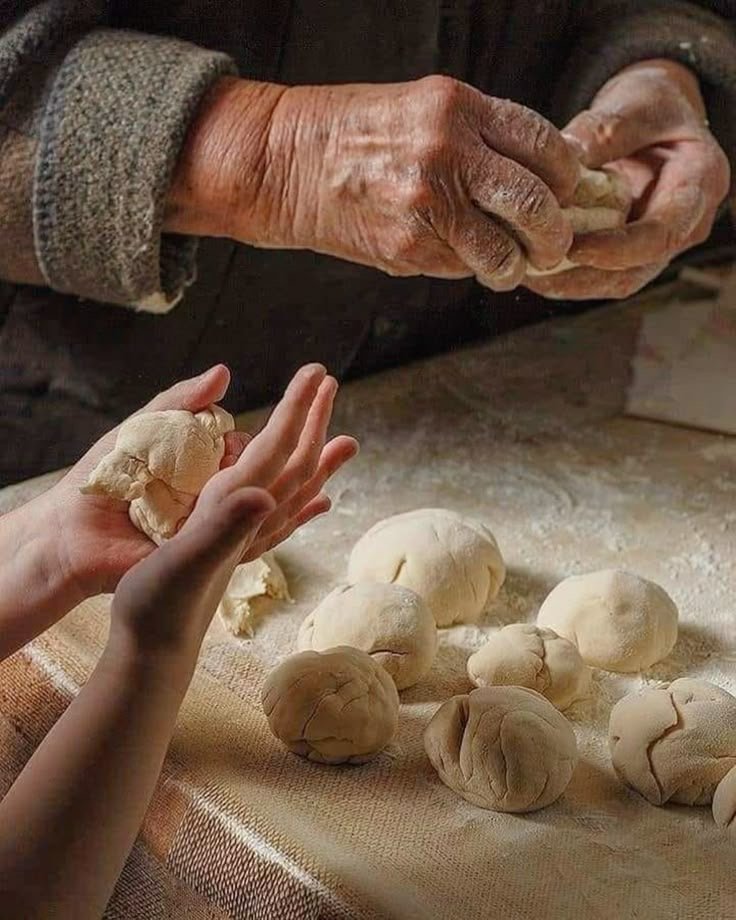Ant Farm
Week One
I didn’t plan to be an ant farmer in the middle of a global pandemic.
In early March 2020, my children begged me for a pet.
Under normal circumstances, I wouldn’t have considered their request; our lives were too busy. But the arrival of the COVID-19 virus, and the departure of regular school, work, or sleep schedules impaired my better judgement. My children sensed my vulnerability.
“What kid of pet?” I asked.
I was still starting at my computer screen, hoping to find a sense of accomplishment somewhere within our disrupted household.
“Dad said ask you,” said my eight-year-old son, Robbie.
“A rat!” said my eleven-year-old daughter, Ellen.
“A skunk!” said Robbie.
In unison, they said, “A dog!” and high-fived each other.
I turned to look at them. “You spent all afternoon fighting, but you can agree on a dog?”
“Yay!” said my daughter. “Let’s go tell Dad we’re getting a dog!”
I said, “We are not getting any creature that requires walking or scooping. Or, any effort on my part.”
“A skunk could live in my room,” said Robbie, all pleading puppy eyes.
“A skunk would smell better than you,” Ellen said to her brother.
She stuck out her tongue and he retaliated with a half-hearted swing in her direction.
Trying to avoid another round of fighting, I said, “If you two can find something that costs under $20, can be shipped to our door, and takes up no more than one square foot of space, I’ll think about it.”
I assumed my extensive search parameters would keep them busy—and petless.
Operation Family Pet Research bought me an hour of work time, plus an additional thirty minutes during which I refreshed the online shopping website five hundred times and scored a delivery window that included toilet paper. I felt productive for the first time all day.
They returned with a list of four possible animals.
The fire-bellied newt was rejected because it ate live crickets.
I said, “No fair. That counts as two pets.”
The hissing cockroach was too scary.
Robbie said, “It looks like it bites. It can’t live in my room.”
The stick bug lacked a personality.
“That’s boring,” said Ellen. Once she’d turned eleven, everything was boring. Even a killer virus seemed to bore her.
“And, the last one?” I asked.
“Ants,” said Robbie.
“An ant farm,” said Ellen.
I raised my eyebrows. “Really?”
I considered what I knew about ants. In the midst of a crisis, as I frantically purchased food, and tracked grocery trends, I admired ants. They worked together, stored food, and defended their homes. Always purposeful and productive, ants knew just what to do, whether they lived under a sidewalk, or within the timbers of a house.
I said, “I like ants. Okay, ants it is.”
This was a unifying victory for my kids.
“Let’s go figure out where they’ll live,” said Ellen. She grabbed Robbie’s hand and they raced off together.
The ants were already creating peace in our house! They hadn’t even arrived and I loved them. I turned back to my computer, ready to attack the next stage of the plan.
The ants would be better than the average pet: they would be the ideal activity for my children, who, in addition to homework, needed something to entertain themselves while their dad and I worked, and while off school for a month. Surely, it wouldn’t be more than a month. In four weeks—six, tops—the ants would dig tunnels, and teach my children responsibility for living things. The kids would learn about about death, but in a less painful way than listening to the evening coronavirus news.
And then, after generously entertaining and educating, the ants would politely die six weeks later.
I placed an order for an ant farm through a scientific supply company, almost giddy at the possibility of making up for the previous week’s lost work time. I congratulated myself for purchasing the ant farm—an educational tool disguised as a family pet—before they all sold out like hand sanitizer.
But, late that night, when I told my husband about our choice, he said, “I can’t believe you’re willingly inviting insects into the house. Didn’t we pay exterminators to come spray for ants last spring?”
On the verge of sleep I said, “Uh huh. Just be thankful it’s not a skunk.”
***
While we awaited our new pets, I fantasized that my children would be so engaged with the ants they’d write astute empirical observations, allowing me an uninterrupted hour or four to complete my own work. Afterward, I would email notes and hand-drawn pictures to their teachers, who would, of course, recognize my kids’ gift for the scientific method. Educators—real ones, not just me playing at teacher—would exclaim over their natural ability to nurture these insects into prosperity atop a bedroom dresser. With my children occupied, I could reclaim the time I was accustomed to having when they were normally in school.
Week Two
The Western Harvester ants arrived in a cardboard box on the doorstep of our urban Seattle home. While my children did their homework, I snuck into the kitchen and unpacked.
The kids had asked to set-up the habitat when it arrived, but I decided it would be less messy if I just did it myself. It was the first time all day the house was quiet and I was alone.
Inside the box was a sealed, five-inch vial-full of about forty ants, a plastic ant home, and clean, white sand. And, six pages of conflicting directions riddled with typos.
I inspected the ants in their tube. They seemed healthy and active, and looked just like the sort of ants who crash picnics.
The habitat came fully assembled, made of two twelve-inch, clear plastic windows supported on four sides by inch-thick, green plastic pillars. The top of the home had a quarter-inch sliding hatch, through which, presumably, all sand, food, water, and ants would have to pass to gain entrance. At the bottom were one-inch compartments on either side of the living chamber that a diagram referred to as “viewing platforms.” The instructions suggested those areas would remain clear of sand.
I turned the narrow, rectangular contraption all around, searching for a larger, removable panel through which to introduce the sand and ants, but could find none. Perplexed, I looked between the small, round mouth of the ants’ vial, and the even smaller, square mouth of the habitat entrance.
If I wanted to buy myself precious work time, I would have to act like one of the competent teachers we now only saw on videoconferences. In short, I would have to perform some Santa-down-the-chimney-magic to get them into their new home.
I started by pouring the sand into the top of the habitat. Most of it flowed in—more than if my children would have done it— and made its way into the bottom of the chamber. But, once finished, I discovered the sand had infiltrated the lower observation platforms. Shaking only made it worse. The lower section was sealed; there was no way for me to remove the sand without breaking the ants’ home.
I sighed and tried not to grind my teeth, a habit I’d begun earlier in the week while spending hours helping my children with homework they were lucky to have, and cleaning and cooking in the safe, secure home we were fortunate to be in.
I looked for hope somewhere in the six pages of ant farm instructions. Page three said that if the sand didn’t bury the ants alive, they would move it where they wanted; a fun activity to watch.
“Great,” I whispered, “let’s have some fun.”
Just then my husband walked by, in between conference calls and quarantine-inspired home improvement projects.
He said, “Can’t you just go outside, gather-up some ants, and put them in a jar?”
I scowled and flipped through the instructions. “I think I read something about that starting a war,” I said, pointedly.
“Hey kids!” my husband yelled.
“Wait!” I hissed, “I thought I’d just do it—”
“—come help your mom with the ants!”
“—myself,” I finished.
My son, happy for any reason to abandon his schoolwork, ran to the kitchen. He studied the tube of red and black ants.
“How will you get them in there?” he asked, pointing to the habitat.
Aside from that skunk business, he’s a practical planner like me.
“We put them in the refrigerator for ten minutes. That makes them sleepy,” I explained. I tried to mimic the patient tone of the teachers I’d observed in his classrooms. “Then, we’ll gently shake them into the top of the tank.”
My son gave the tiny ant farm hatch a dubious look. “I can’t watch. This isn’t going to work.”
He paced and began to hyperventilate, which I chose to ignore. In my new role as Science Lab Manager, and, according to articles about parenting during a global crisis, I was supposed to project a positive, reassuring example to my children.
I took the vial from him, put it into our overstuffed refrigerator filled with panic-purchased food, and said, “Set the timer.”
Ten minutes later, the ants seemed sleepy. They were no longer running about frantically like I had most of the day.
“Come watch,” I called to my family.
Once in the kitchen, Ellen grabbed my phone and turned on the video, a big, know-it-all smile on her face.
My son ran down the hall, away from the kitchen, near tears.
“This is going to be bad!” he kept saying.
“It’ll be fine,” I said. I no longer sounded like his teacher.
I created a little funnel from a piece of paper, and popped the top off the vial. As soon as I upended the tube, very awake, non-sleepy ants poured out, most bouncing off the paper and falling, pincers snapping, onto the countertop.
“Hey!” I said, “Help me get the ants in the hole!”
My daughter laughed, still videoing. “I can post this on TikTok!”
From the front porch, my son screamed into the silent neighborhood, “I told you so!”
Wearing ear buds, my husband walked by carrying a tangled maze of our bathroom plumbing, while talking to some unseen person on a conference call.
Now there were a few ants in the habitat, and about thirty scurrying around the kitchen countertop. Ants fell to the floor. My daughter leapt onto the back of the sofa, phone in hand.
“You guys!” I yelled, “Someone, help!”
“The ants are escaping!” said my daughter in delight.
“If you’d come when I called,” I said to her, “maybe they’d still be asleep!”
My son ran through the kitchen, shouting, “This is a disaster!”
I raised my fist and considered smashing the fleeing ants. I wondered, would they bite me before they were dead? Did I even care? Then I remembered the video. There would be evidence I had killed the subjects of our science project. For my children, the world was frightening enough without the added trauma of smashed ant bodies littering the kitchen where we’d just eaten dinner. Plus, it would mean more clean up for me.
My husband returned from the garage and grabbed a piece of paper. After ten minutes of brushing, flicking, and herding, we managed to contain most of the escapees.
“Put that camera down and look for ants on the floor,” I commanded my daughter.
I no longer cared if I was on video, or what voice I used.
She hopped down and yelped in pain.
“It bit me!” she said. “No way are those things going in my room.”
My son was face down on the sofa, sobbing.
Of the forty ants we received, half were injured, escaped, or deceased. The fiasco left me with the same feeling of overwhelm and failure I’d had the first weeks of home schooling. I’d rushed between my children, my unfinished work, and household chores, nothing done well or completely.
Inside the ant farm, twenty ants waved their mandibles and scurried back and forth.
My husband said, “Is it still a colony if half of them are dead or missing?”
***
Two nights later, the ant habitat sat on the kitchen counter, ignored by my children. The ants were not tunneling as promised on page two of the owner’s manual. And, more notably, another half of them were dead. Ten remaining ant sisters dragged the lifeless bodies of their family through the sandy drifts of the habitat.
“Come feed and water your ants,” I said to the kids after dinner. I was determined to be finished with pet care.
“They’re scary!” said Robbie. “I think they died of Coronavirus.”
He sat at the counter and continued the day’s pile of assignments. Interacting with the ants was even less appealing than doing homework.
From her bedroom, I could hear Ellen get on the phone with her friends.
I watched the ants through the plastic. “I think something’s wrong,” I said to anyone who would listen.
There was no response.
I flipped through the directions, trying to decide which of the conflicting food and water instructions to follow.
The next morning, all of the ants were dead.
Week Three
Clearly, the ants were defective.
The pre-virus consumer in me stung with indignation over the mass die-off. How dare those ants expose my incompetence as Head of Household Education? I didn’t have time to worry about their mortality when that of my family’s—the world’s!—was at stake. At least there had been some warning of the virus’s approach; the ants’ death was so sudden, I hadn’t seen it coming. I was dying to complain to someone—anyone.
I threw the carcass-riddled ant farm into the garbage, and hunted for someone who would listen.
The scientific supply company, off in some Mid-West state, needed to be made aware of the upset their insects had caused my budding scientists. And, for my lack of productivity resulting from their shoddy product. After all, soon enough, we would be back at work and back to school. The company should know their product couldn’t withstand the rigors of at-home animal husbandry.
I drafted an email to the ant company, simply stating:
“All the ants died by day four.”
I didn’t mention the ones we’d maimed and lost that first night.
Week Four
A week later, our family, like millions of others in Washington State, were under stay-at-home orders that would confine us through early-May. And, a rumor was circulating that schools would not reopen until September—if at all. As someone who took pride in not buying into hysteria and being prepared for anything, I assured myself it was only a rumor.
Daily, I soothed myself by hiding in the pantry and stuffing fistfuls of sugar cereal into my mouth. When I awoke in the middle of the night, heart pounding, overwhelmed and worried about groceries, and my children’s diminishing social skills, I reminded myself we were fortunate to be safe in our home.
And, just in case there was truth to the rumors, I began researching other, more permanent family pet options. I did so at two a.m, huddled in our bathroom by the light of my smartphone. I searched for an animal who would understand and respect my need for time to work and withstand our ineptitude. Perhaps a couple of giant cockroaches.
They were all sold out.
***
Later that week, without announcement or explanation, a box with a familiar label arrived on our doorstep.
Once again, I stood in my kitchen holding a tube of forty Western Harvester ants.
I imagined the dismal laboratory from which they’d been sent, a dimly lit missile silo-like ant factory, outfitted with an automated fulfillment system—not even a real human being, the workers having been sickened or killed by COVID-19. The blind-hand of the unmanned facility had received my email, triggering a robotic arm to mindlessly package and mail a replacement vial of ants. The robot was unaware of our negligence and the fate of the first batch. It didn’t know we should be reported for animal cruelty. Unaware of our ability to kill ants faster than a virus could shut down the economy, the ant farm robot had packed up the next, unfortunate bunch and sent them to us.
I studied the vial full of creatures I had hoped would be my deliverance, the solution to all my quarantine worries and responsibilities. My husband and children were still unaware of the arrival of these replacement ants. I could just let them loose outside, where they could have a taste of freedom before perishing. I rolled the vial in my hands, wondering if that’s what an ant would want. What would something—or, someone—in doomed, long term quarantine want?
I began to work the cork from the vial.
And then, my daughter walked through the kitchen.
“Oh, I’ll get the phone for a video. How long will you refrigerate these ones?” she asked.
“An hour,” I said. “At least.”
“Won’t that kill them?” she asked.
I smiled.
-Wendy Warren
Wendy Warren fiction has appeared in The Birland Journal, and her business writing has been distributed to thousands of California health insurance recipients. She is at work on a novel, and a collection of interconnected short stories set in the 1970’s. She resides in Seattle, Washington with her family.






















